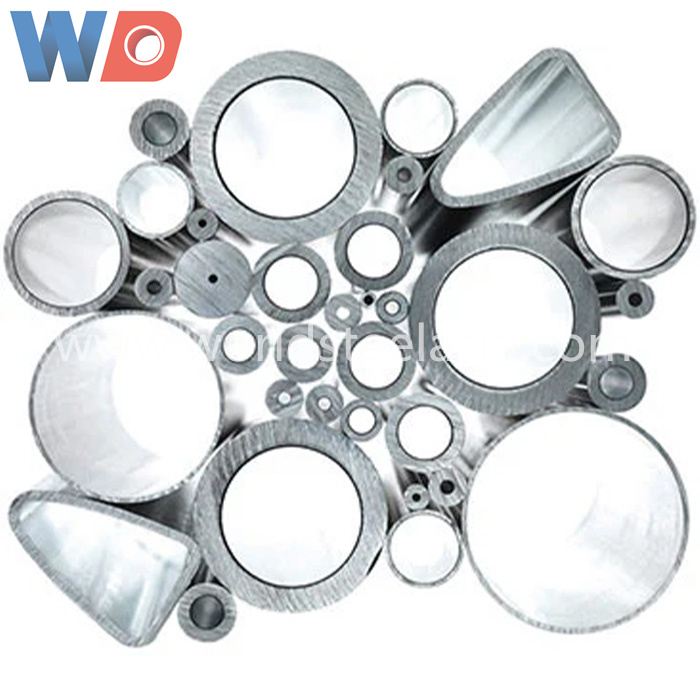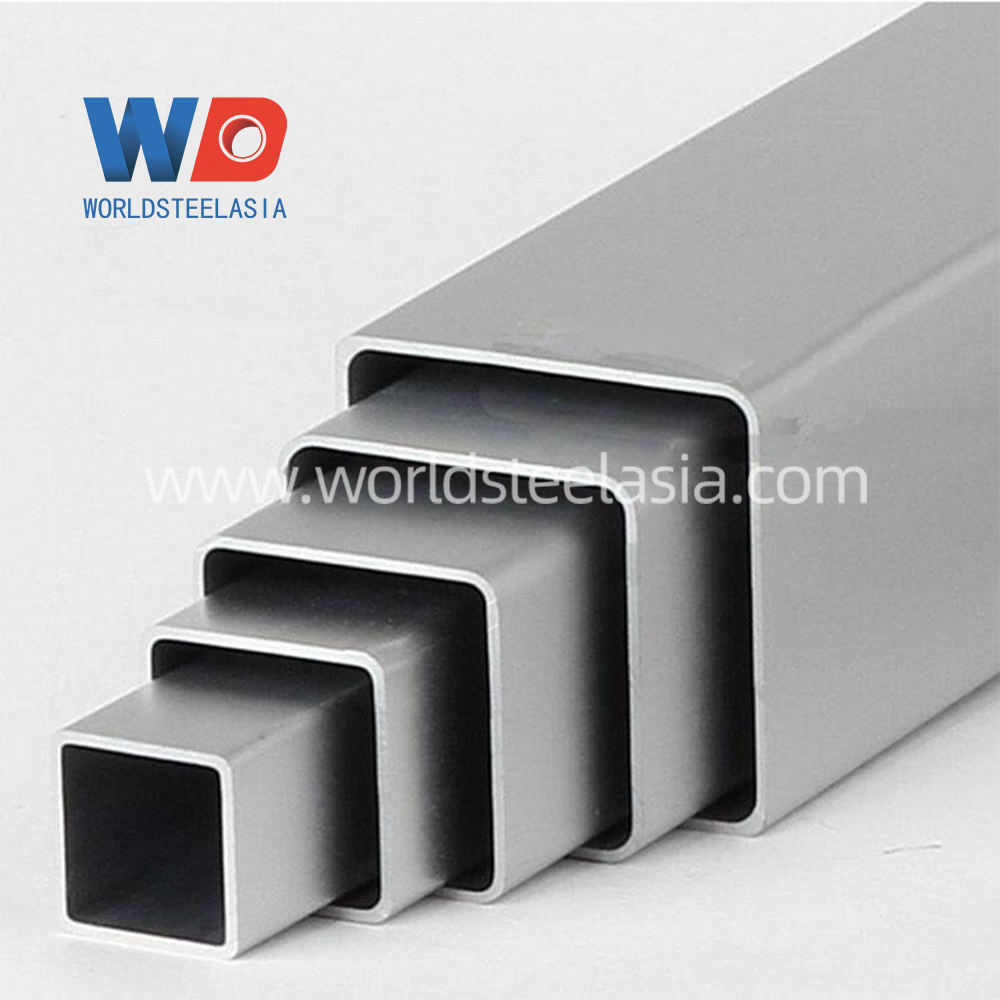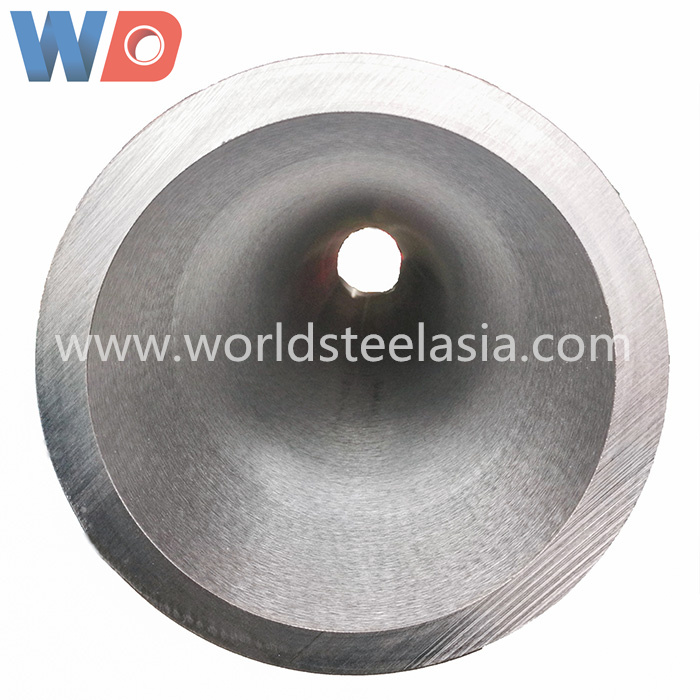sanitary seamless stainless steel pipe (food grade) and key points of purchase
PRODUCTION AND APPLICATION OF SANITARY SEAMLESS STAINLESS STEEL PIPE (FOOD GRADE) AND KEY POINTS OF PURCHASE
- ASTM A270 / SA270M
- Sanitary seamless stainless steel pipe (food grade) tube
- Aisi 304 ss sanitary tube
- 316L ss sanitary tube
- Sanitary tube 304/304L stainless steel pipe Polished suface 300# 400# 600# 800#
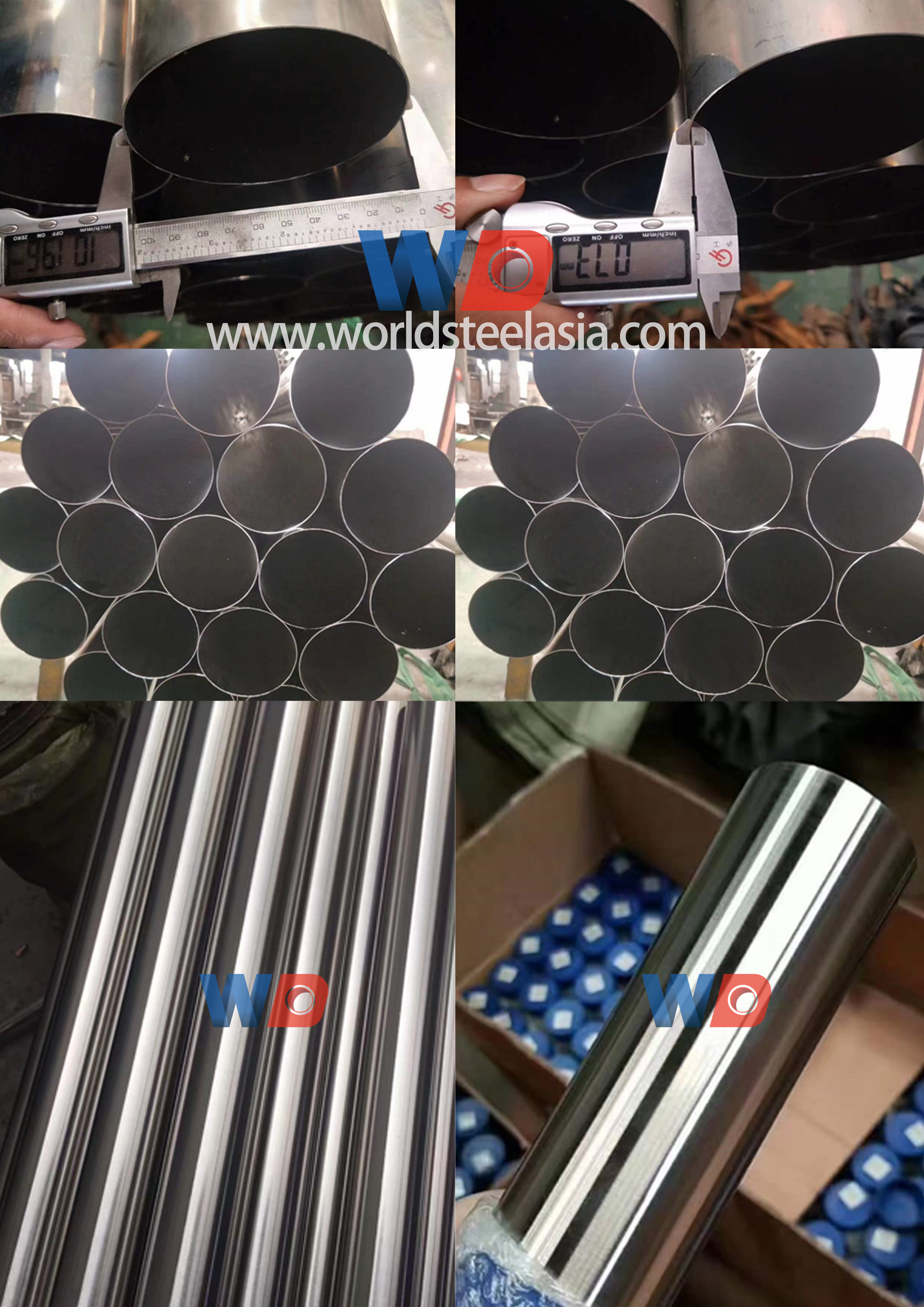
Combined with the process and equipment application of the company's production of sanitary seamless (welded) stainless steel pipes, high-quality steel pipes are produced to meet the needs of industrial fluid pipes, fill the domestic gap and replace imports.
Aisi TP304 SS 316L SS sanitary grade (food grade) seamless stainless steel pipes are widely used in many fields and industries of national economic construction, such as pharmacy, food, beer, drinking water, bioengineering, chemical engineering, air purification, aviation, nuclear industry, etc., and a large number of imports are made every year. This paper introduces the process and equipment of producing sanitary (food grade) seamless stainless steel pipes, as well as the performance and quality of the pipes. This tube belongs to the most advanced and precise level in China and has been widely used and exported abroad.
一、 SURFACE ANALYSIS OF STAINLESS STEEL ( ASIA 304 316L , JIS SUS304 SUS316L , EN1.4301 EN1.4404 .
Both AES and SPS can be used to analyze the surface of stainless steel to determine the corrosion resistance of the inner and outer surfaces of stainless steel pipes. The analytical diameter of AES method is very small, which can be less than 20nm. Its initial function is to identify elements. XPS analysis is about 10 μ m. It is mainly used to determine the chemical state of elements near the surface.
The results of scanning the mechanically polished 316 stainless steel surface exposed to the atmosphere with AES and XPS detectors show that the typical total depth of analysis of the surface of stainless steel diamond is 15nm, and provides information about the composition, thickness and corrosion resistance of the passivation layer.
According to the definition, austenitic stainless steel contains high chromium and nickel, some contain molybdenum ( such as 316L 00cr17ni14mo2 ), titanium, etc., and generally contain more than 10.5% chromium, which has good corrosion resistance. Corrosion resistance is the result of the protective performance of chromium rich passivation layer, which is usually 3-5nm thick, or as thick as 15 atoms. The passivation layer is formed during the oxidation-reduction reaction of chromium and iron. If the passivation layer is damaged, a new passivation layer will be formed quickly and / or followed by electrochemical corrosion, which will lead to deep pitting corrosion and intergranular corrosion of stainless steel. The corrosion resistance of passivation layer is related to the content of chemical components contained in stainless steel, such as high chromium, nickel and molybdenum, which can improve the binding energy potential of passivation layer and strengthen the corrosion resistance of passivation layer; It is also related to the internal surface treatment of stainless steel pipes and the use of fluid media.
二、 SURFACE CORROSION OF STAINLESS STEEL PIPE ( UNS S31603 S30408 UNS08904 S31803 )
1. In the medium containing Ci, the passivation layer on the surface of stainless steel is easy to be destroyed because of the high potential energy of CI oxidation. If the passivation layer and the printed layer are only on the metal, they will continue to corrode. In many cases, the passivation layer is only destroyed locally on the metal surface. The role of corrosion is to form small holes or pits. The irregular distribution of small pits on the material surface is called pitting corrosion. The pitting rate increases with the increase of temperature and concentration. The solution is to use ultra-low or low carbon stainless steel (such as 316L 304L)
2. Austenitic stainless steel is easy to be damaged when it is manufactured and welded. When the heating temperature and heating speed during manufacturing and welding are in the stainless steel sensitization temperature region (about 425-815 ℃), the supersaturated carbon in the material will first precipitate at the grain boundary and combine with chromium to form chromium carbide Cr23C6. At this time, the diffusion speed of carbon in austenite is higher than that of chromium. Chromium has no time to supplement the chromium lost by the formation of chromium carbide at the grain boundary, and the chromium content at the grain boundary will continue to decrease with the continuous precipitation of chromium carbide, The so-called chromium poor area is formed, which weakens the energy of the electric pad and reduces the corrosion resistance of the passivation layer. When contacting with corrosive media such as ci- in the medium, it will cause micro battery corrosion. Although the corrosion is only on the surface of grains, it rapidly penetrates into the interior to form intergranular corrosion. Especially, the stainless steel pipe is obvious at the welding position.
3. Stress corrosion crack: it is the combined action of static stress and corrosion that leads to crack and metal embrittlement. The environment in which stress corrosion cracking occurs is usually quite complex. It is not only the tensile stress, but also the combination of this stress and the residual stress in the metal due to fabrication, welding, or heat treatment.
三、 RELATIONSHIP BETWEEN INTERNAL AND EXTERNAL SURFACE TREATMENT AND CORROSION RESISTANCE OF STAINLESS STEEL PIPES 304\304L 316\316L 317L 316TI 309S 310S 347H 904L S31803 S32750
The internal and external surfaces of stainless steel pipes (especially after electrolytic polishing and mechanical polishing) have good passivation layer and strong corrosion resistance. High internal and external surface finish and little medium adhesion are conducive to corrosion resistance. The higher the smoothness of the inner surface of the pipe, the less the liquid medium is retained, which is conducive to flushing, especially in the pharmaceutical industry.
1. Electrolytic polishing (electrochemical polishing) of the inner surface of the tube: the electrolytic polishing solution is phosphoric acid, sulfuric acid, chromic anhydride, gelatin, potassium dichromate, etc. The inner surface of the stainless steel pipe is on the anode, and the polishing liquid flows in the and is electropolished with low voltage and high current. At this time, there are two contradictory processes on the inner surface of the pipe, that is, the formation and dissolution of the passivation layer (including thick mucosa) on the metal surface. The conditions for film formation and passivation of the convex and concave parts of the surface are different, and also due to anodic dissolution. Since the conditions for film formation and passivation of the micro convex part and concave part of the surface are different, and due to the dissolution of the anode, the concentration of metal salt in the anode area continues to increase, forming a thick mucosa with high resistance on the surface. The thickness of the film at the concave and convex parts is different, resulting in high current density on the anode surface, fast tip discharge dissolution speed, and the purpose of flattening the prominent microscopic parts in a short time, which can achieve a very high finish RA ≤ 0.2-0.4 μ m。 Under this effect, the chromium content in the inner surface of the pipe is increased, and the corrosion resistance of the passivation layer on the metal surface is increased.
How to master the quality of polishing depends on electrolyte formula, concentration, temperature, power on time, current density, electrode condition, tube surface treatment degree, etc. Poor mastery of technology will damage the surface finish of the tube, too much electrolysis will lead to more and larger concave convex surfaces, and even the tube will be scrapped. To truly make a good quality requires certain technology, and the cost is high.
2. Mechanical polishing of the inner surface of the tube: rotary and linear polishing. Take rotary mechanical polishing as an example: mechanical polishing equipment is relatively simple, power and polishing disc, advanced polishing equipment is relatively simple, power and polishing disc, advanced polishing wax. The cloth plate made of step-by-step fine sand is used to polish the inner and outer surfaces of the pipe back and forth for many times, and the finish can reach RA ≤ 0.2-0.4 μ m。
Compared with electrolytic polishing, mechanical polishing has the advantages of simple equipment, low technical content, easy to master, low cost, and will not damage the tube and cause scrap, so it is widely used. However, the corrosion resistance of the surface printing layer is much better than that of electropolishing.
四、 PRODUCTION PROCESS OF HYGIENIC SEAMLESS STAINLESS STEEL PIPE OF CHONGQING WORLD STEEL CO 。
1、Steel making -- rolling round steel -- piercing -- cold drawing -- cold rolling -- bright annealing -- internal surface polishing -- external surface polishing -- Inspection and acceptance -- packaging and warehousing.
2、Multi roll cold rolling mill: it is the key equipment for manufacturing sanitary seamless stainless steel tubes in China. Taking the cold drawn steel pipe as the blank, the positive and negative dimensions of the internal and external diameter and wall thickness of the cold rolled pipe are less than 0.02-0.05mm, and the internal and external surface finish of the pipe RA ≤ 0.8 μ m. And can be made to a wall thickness of 0.5mm. After polishing, the internal and external surface finish of the pipe can reach RA ≤ 0.2-0.4 μ M (such as mirror).
There are many types and specifications of multi roll cold-rolled tube mills and mandrel types and specifications, which are not described.
The biggest disadvantage of the cold rolled tube is that it is hard, that is, the yield coefficient is large, and it is not suitable for flaring and bending. Strictly speaking, it still does not meet the national standard, so it needs to be treated by thermosetting (annealing).
In general, after the stainless steel pipe is treated by the ordinary thermosetting furnace (milk stove), the oxide skin on the inner and outer surfaces of the pipe needs to be pickled, which destroys the internal and outer surface finish of the original cold-rolled pipe, resulting in small bumps, which cannot meet the surface finish standard of sanitary pipe. Therefore, we should choose the gas shielded bright annealing furnace.
3、 Gas shielded bright annealing furnace: it is composed of two parts, the furnace body of bright annealing furnace and the complete set of ammonia decomposition device.
Bright annealing furnace body: the main structure is a muffle tank with circular section, which adopts the heating method of arranging high-temperature heating wires on both sides and at the bottom, and the ammonia decomposition gas is used as the protective gas and circulating cooling gas. Compact structure, safe operation, reliable control and convenient maintenance, uniform furnace temperature (up to 1150 ℃), low power loss, full use of protective gas, fast cooling speed, ensuring the prevention of re precipitation and precipitation of chromium carbide, so that all chromium carbide is completely dissolved into the austenitic matrix, changing the hard state and metallographic structure of the original cold rolled pipe, and truly achieving the purpose of solid solution treatment.
Complete set of ammonia decomposition device: use pure liquid chlorine to decompose into 70% hydrogen and 30% ammonia, fill it into the furnace and drive away air (oxygen), and the smaller the air as much as possible.
After being treated by the gas shielded bright annealing furnace, the stainless steel pipe is soft, and there is little oxide skin on the inner and outer surfaces, so pickling treatment is not required, and the inner and outer surface finish of the cold-rolled pipe is maintained
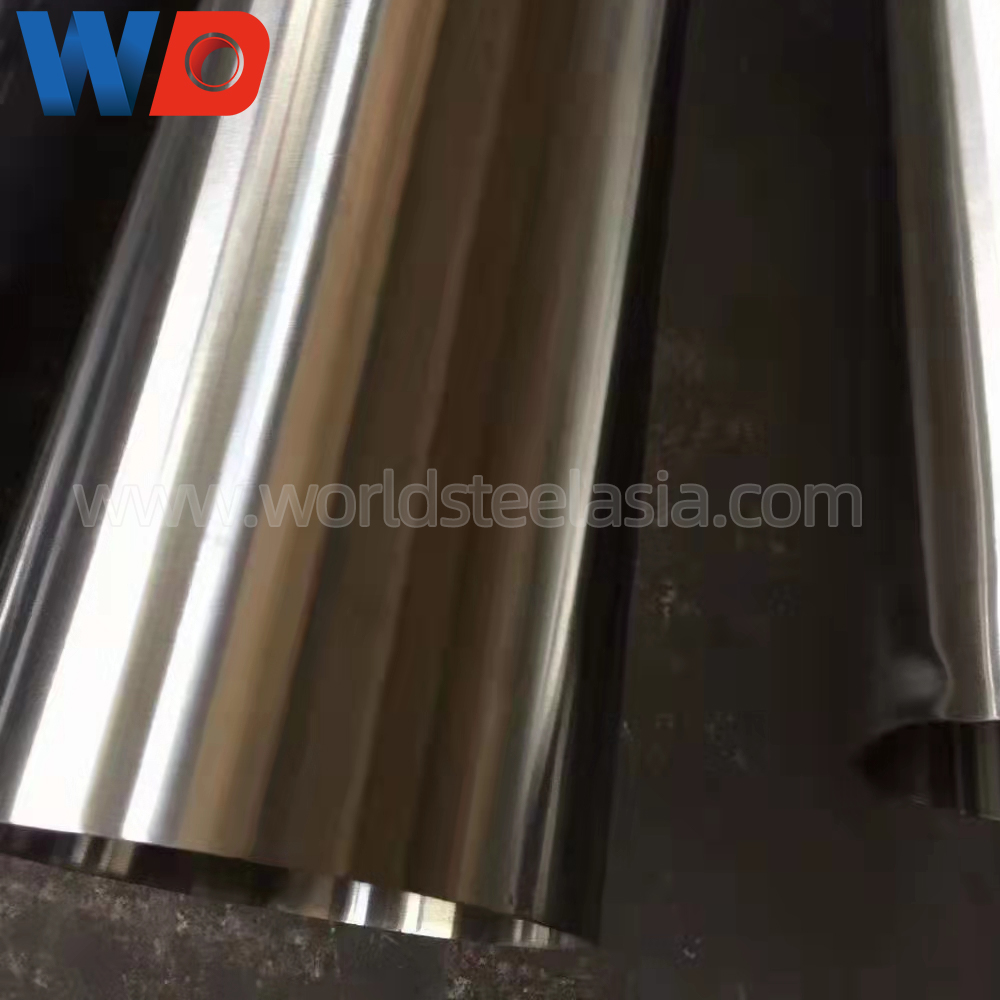
THE SELECTION OF SANITARY SEAMLESS STAINLESS STEEL PIPE IS RELATED TO THE TYPE, CONCENTRATION, TEMPERATURE, PRESSURE, FLOW SPEED AND OTHER FACTORS OF FLUID MEDIUM. REFER TO STANDARD SPECIFICATION ASTM A270
from CHONGQING WORLD STEEL ASIA CO ., LTD
www.worldsteelasia.com

